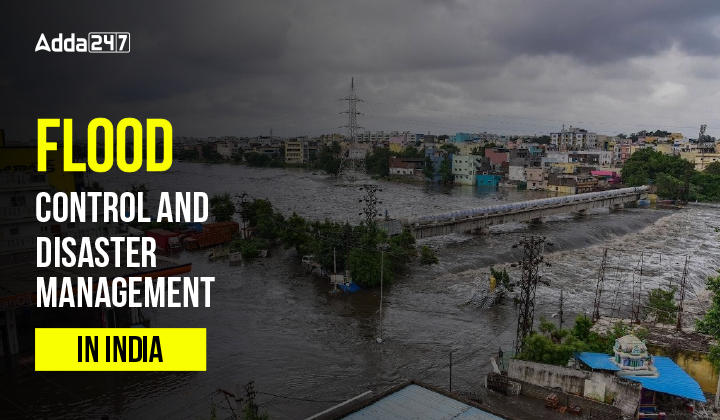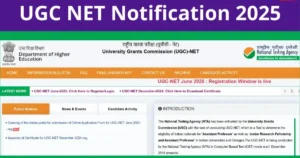Table of Contents
Floods in India are a significant issue, particularly during the monsoon reason. About 10% of the country of India is regularly affected by floods. India is among the top position on the list of “Most Vulnerable Countries to Flooding”. Hence is one of the most pertinent environmental issues for India, which makes it a very important topic for Government Teaching Exam Aspirants for their preparation.
This article will highlight all the pertinent information on Flood Control and Disaster Management in India in detail. Read the following for detailed information on the various ways how floods are controlled in India and the several disaster management methods implemented.
What is a Flood Disaster and its Types?
A flood is an overflow of water on land. Sometimes a river might receive extra water, either from heavy rains or other natural disasters. When this happens, the water overflows from its normal path in the river bed and onto the dry land. This goes on to result in a flood disaster.
The types of flood disasters are:
- Flash Floods – A flood induced by a large amount of rain in a short period of time, usually less than 6 hours. Flash floods are typically defined by violent torrents that burst over river beds, metropolitan streets, or mountain valleys, sweeping everything in their path.
- River Floods – The most prevalent is when a river or stream overflows its banks. These are known as riverine floods. A river can be overwhelmed and spread over neighbouring land by heavy rain, a broken dam or levee, quick glacier melt in the mountains, or even a beaver dam in a vulnerable place.
- Coastal Floods – Coastal flooding is the inundation of a coastal environment caused by a short-term increase in water level induced by a storm surge and tides. The magnitude and extent are determined by the coastline topography, storm surge conditions, and the bathymetry of the surrounding area.
What is Disaster Management?
Disaster management is the process of dealing with the human, material, economic, or environmental consequences of a disaster; it is the process of “preparing for, responding to, and learning from the effects of major failures.” Disasters, while commonly caused by nature, can also have human causes.
The procedures involved in disaster management are:
- Mitigation
- Preparation
- Response
- Recovery
Agencies Involved in Disaster Management in India
The National Disaster Management Authority, or the NDMA, is an apex body for disaster management, headed by the Prime Minister of India. It is responsible for the supervision, direction, and control of the National Disaster Response Force (NDRF). Other agencies involved are:
- National Institute of Disaster Management (NIDM)
- International Strategy for Disaster Reduction (ISDR)
What is IMD?
The India Meteorological Department (IMD) is an agency of the Government of India’s Ministry of Earth Sciences. It is the primary agency in charge of meteorological monitoring, forecasts, and seismology. The IMD is based in Delhi and runs hundreds of monitoring stations throughout India and Antarctica. Chennai, Mumbai, Kolkata, Nagpur, Guwahati, and New Delhi have regional offices.
IMD is responsible for cautioning the general masses before a catastrophe strikes. The magnitude of floods and the disaster it’s likely to cause is detected by the IMD.
Role of IMD in Flood Control
IMD plays an integral role in flood control and foreseeing the magnitude of disasters. Some of the reports on the basis of which it controls flood have been given below.
- To take meteorological observations
- To provide current and forecast meteorological information for optimum operation of weather-sensitive activities like agriculture, irrigation, shipping, aviation, offshore oil explorations, etc.
What is Flood Control?
The worst-hit states by floods, according to estimates by the National Flood Commission (1980), also known as the Rashtriya Barh Ayog, are Assam and Bihar, followed by Uttar Pradesh and West Bengal. All states, even Rajasthan, are prone to flooding during the monsoon season.
Flood control begins with flood forecasting. In November 1958, CWC (then known as Central Water & Power Commission) established a Flood Forecasting Centre at its Delhi headquarters in order to provide timely Forecasts and Warnings of the incoming floods to the villages situated in the river areas surrounding the National Capital, Delhi. This marked the beginning of scientific flood forecasting.
Flood Forecasting – Primary Objectives
Flood forecasting is important for the estimation of future water levels or flows at single or multiple sites of a river system for different lead times. Precise and reliable forecasting is important for flood warnings, flood control planning, and rehabilitation.
There are four primary objectives that flood forecasting and control wish to achieve. Read below to know more:
- observation and collection of hydrological and hydrometeorological data
- transmission of Data to forecasting centres
- analysis of data and formulation of forecast
- dissemination of forecast
Further, floods are categorized by the Central Water & Power Commission according to the severity of their nature in ascending order. The following has been shown below:
- Low flood stage
- Medium flood stage
- High flood stage
- Unprecedented incoming flood
How to work on Flood Control & Disaster Management?
Working on flood control and disaster management comes with extensive planning and strategizing. Enumerated below are the key points on how one can go about with the same:
- Every flood-prone basin needs to have a master plan for flood control and management.
- Wherever possible, sufficient flood-cushion ought to be made available in water storage projects to enable better flood management. In extremely flood-prone areas, flood prevention must be prioritized over-irrigation or power benefits when determining reservoir regulation policies. Even if doing so means giving up some of those benefits.
- For avoiding damages and reducing ongoing costs associated with flood relief, flood forecasting and warning, etc., more emphasis must be placed on non-structural initiatives such as flood plain zoning and floodproofing.
- Settlements and economic activity in floodplain zones must be strictly regulated in order to reduce the loss of life and property in the case of floods. Additionally, floodproofing needs to be done to reduce casualties and property damage.
- The flood forecasting operations ought to be updated, improved, and expanded to previously unreachable areas. For effective reservoir regulation, inflow forecasting must be created.
Disaster Management of Floods – Methods
India has few methods for implementing disaster management of floods. They have been mentioned below:
- Developing more Dams and Reservoirs
- Channelling the extra water towards floodways and canals
- The replenishment of groundwater can be done with extra water.
- A flood defence device called the self-closing flood barrier (SCFB) is intended to shield people and property from inland waterway floods brought on by torrential rain, strong winds, or quickly melting snow.
- Having a preparedness strategy for disasters, as well as an integrated solution and approach
Conclusion: Every year, floods do significant harm to property and human life, so it is time for the federal and state governments to develop a long-term strategy to reduce flooding that goes beyond band-aid solutions like dredging and creating embankments. There is also a requirement for an integrated basin management plan that includes all the nations which share a river basin along with the Indian states.



 UGC NET Notification 2025 Out, Exam Date...
UGC NET Notification 2025 Out, Exam Date...
 Last Minute Preparation Tips for MP TET ...
Last Minute Preparation Tips for MP TET ...
 GAT B Cut Off 2025, Check Expected, Cate...
GAT B Cut Off 2025, Check Expected, Cate...














